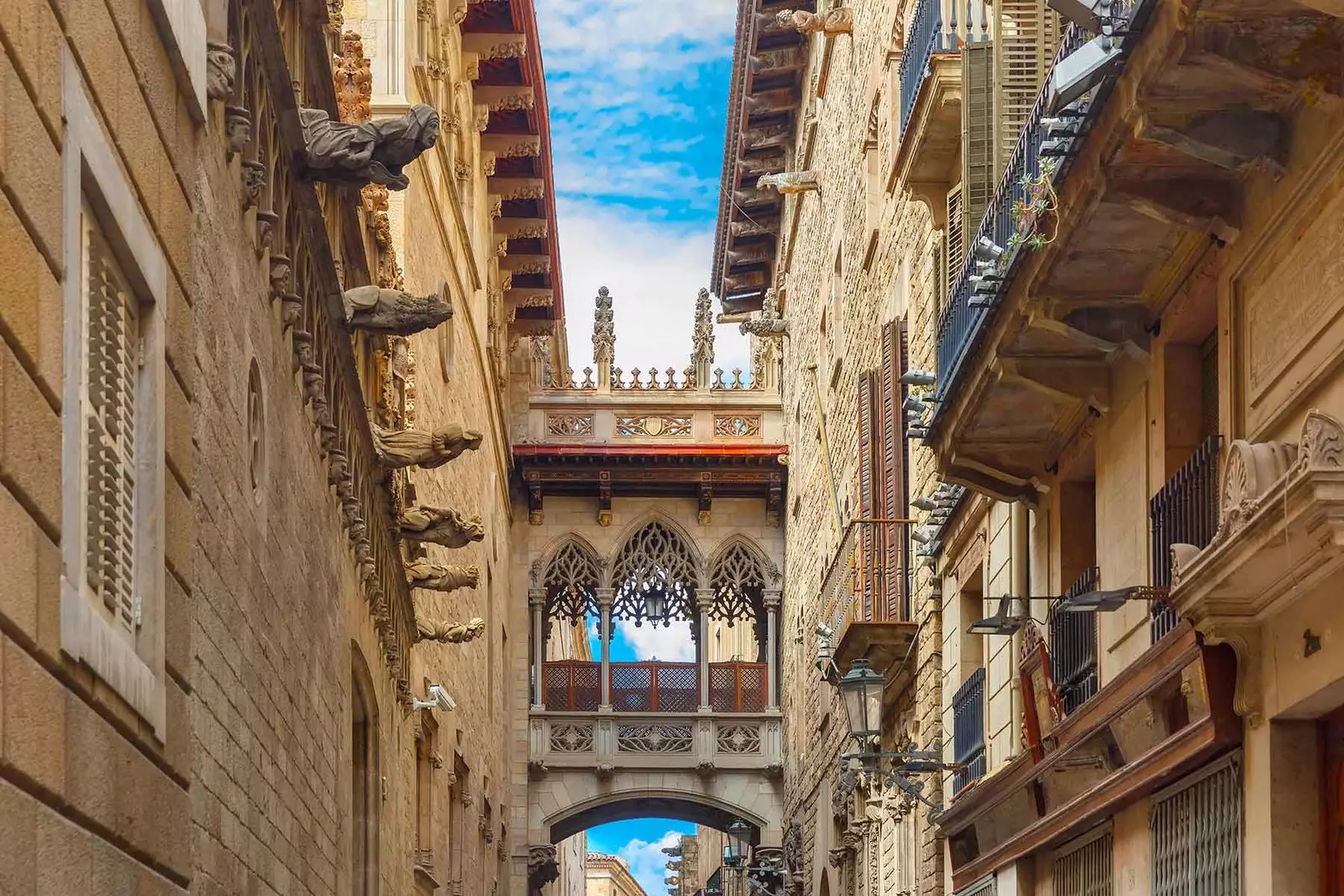
A walk down Carrer Bisbe
One of the biggest attractions of Barcelona lies in the fact that its old town still preserves enclaves of yesteryear almost intact despite the passage of time , which allows us to wander through its streets, where you can almost relive what the Barcelona of our ancestors was like. And if there is an enclave endowed with this evocative capacity, it is the jewish quarter.
Sefarad is the name used by the Jews, since the Middle Ages, to refer to the Iberian Peninsula. Its history in Spain is long and ancient, so much so that it dates back to Roman times. Century after century, their presence became fruitful and rooted until the arrival of two disastrous dates: 1391 when the anti-Jewish revolts began and 1492 when they were definitively expelled from Spain.
Of all the Jewish communities that inhabited the peninsula, that of Barcelona was one of the largest and most powerful. The first documents that confirm their presence in the city are from the years 875-877, but it is probable that they were established there from the first centuries of the Christian era. The truth is that the existence of Jews in Catalan lands is even prior to that of the Catalans themselves. The Jewish quarters of Catalonia, as well as those in Valencia and the Balearic Islands, are called 'Call' , which means small street or alley. This denomination is the one used to refer to the set of streets occupied by them, that is, to the neighbourhood, while the community receives the name of aljama.
The aljama of Barcelona was the largest in Catalonia in the Middle Ages . He had a reputation for being a 'city of wise men' among the Jews, because in its streets flourished crafts, commerce, theology, science, poetry, philosophy, Kabbalah and also had a renowned rabbinical school. Today, Barcelona keeps a clear reminiscence of this Jewish past and, among its numerous references in the toponymy of the Catalan capital, Montjuïc, Mount of the Jews, remains indelible, which was used as a cemetery for the Jewish community for centuries and where they owned farmland, houses and towers.
Medieval Barcelona had two Jewish quarters, the call major which was bounded by the current streets of Banys Nous, Sant Sever, Bisbe and Call. In the middle of the 13th century, due to the secular growth of the community, it was enlarged and as a result a new area was built known as Minor Call, located around the current church of Sant Jaume, on Ferran street. These two neighborhoods were not connected to each other, but Up to 4,000 people lived in these narrow streets in the center of Barcelona. Life within the Call was governed by the Hebrew calendar, with Saturday being the holy day for them, and they followed Jewish customs and laws.
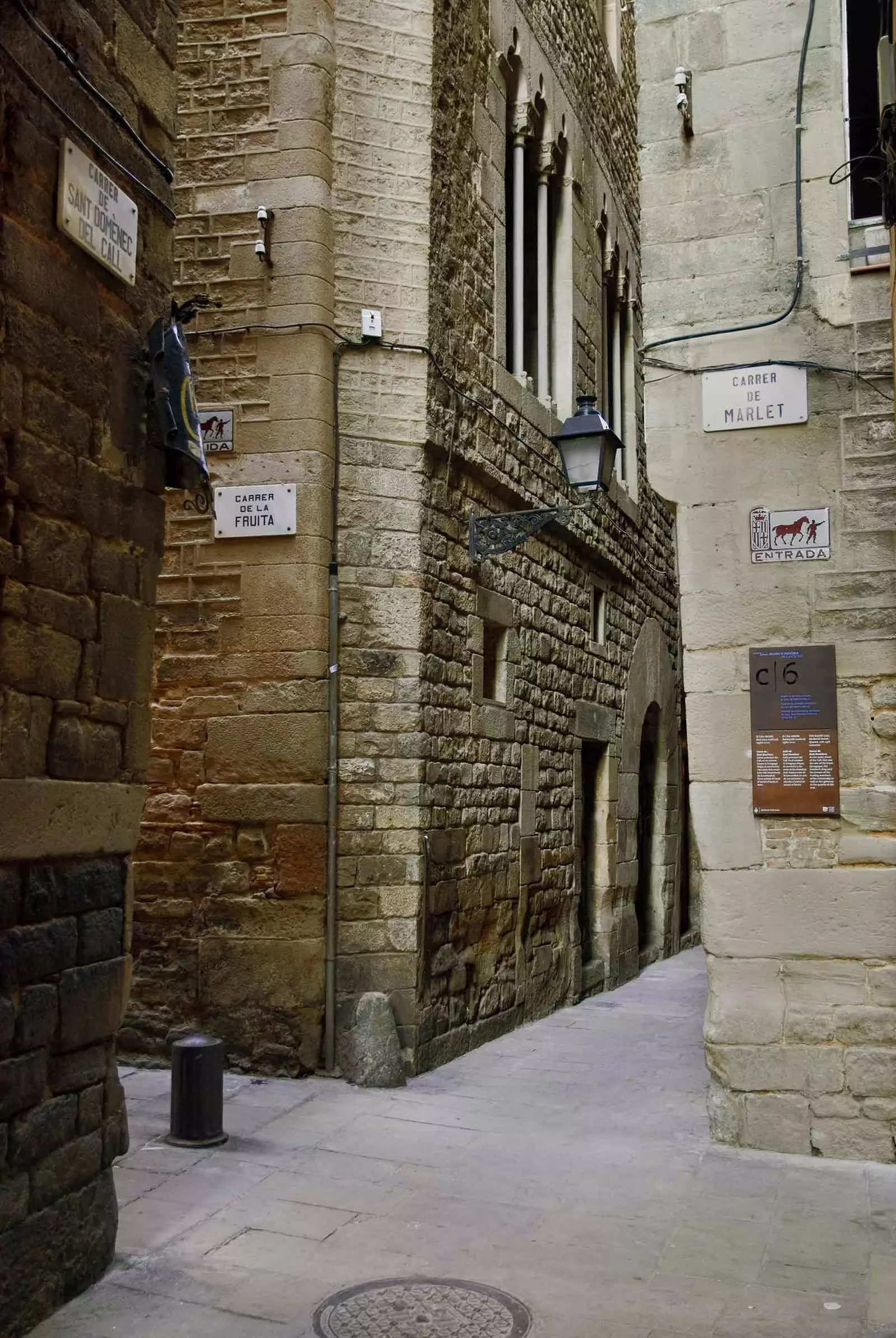
All this was the Call
For many centuries the Jewish and Christian communities maintained a good relationship They owned joint businesses and the count-kings entrusted important public positions to Hebrews, such as those of tax collector or ambassador. However, after a series of fateful events, including the arrival of the Black Death, slander began to spread, such as that the Jews poisoned the water. On August 5, 1391, this accumulated tension ended up exploding, giving rise to the attack suffered by the Call , which was robbed, set on fire, 300 people were killed and many others were forced to convert to Christianity. From then on there was no possible recovery of the neighborhood, nor of the coexistence between the surviving Jews and Christians. All this ended with his expulsion of Spain by the Catholic Monarchs in 1492. Since then, the imaginary about Sepharad became the memory of a place where there was a rebirth of Jewish culture, but to which they could not return.
Despite the looting and the fact that the Call was occupied and hidden, today, among Gothic cathedrals and streets dedicated to saints, the past of this important community can be guessed. The location where the Call is located is a compendium of winding and charming streets located in the Barri Gòtic , and in which there are certain obligatory stops to better understand the environment that surrounds us.
At number 10 of the narrow street of Banys Nous is currently located **the S'Oliver store** and there, in its depths, among furniture of all kinds, you can discover the ancient Jewish ritual baths -mikves- of the city. Christians and Muslims were also frequent users of these Banys Nous (New Baths). The building dates back to the 12th century and is in a wonderful state of preservation, where large columns and stone arches take us back to another era. In the same street, On the lower floor of the Caelum teahouse, the old arcades of the women's baths still stand.
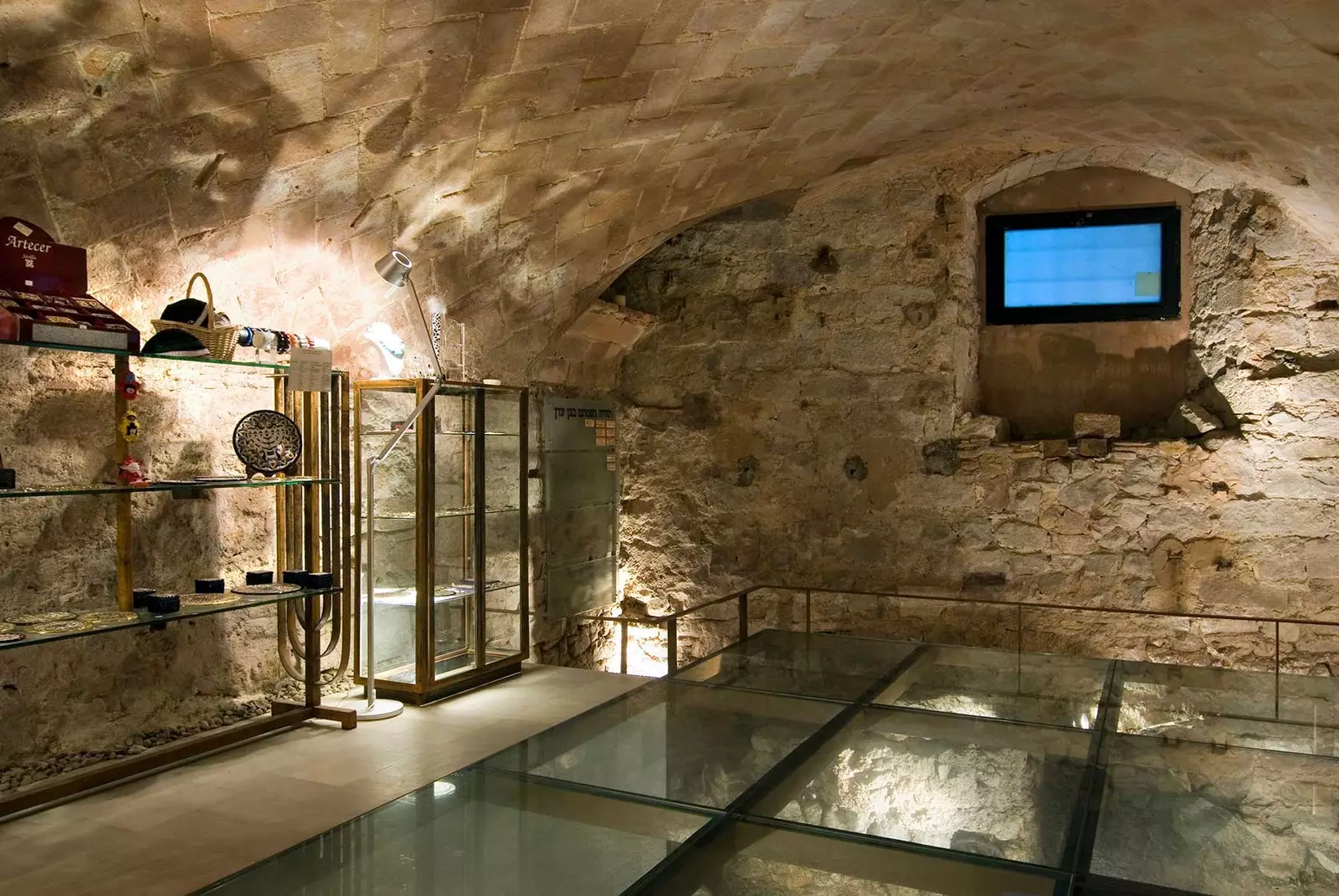
Interior of the Great Synagogue
The Sant Honorat street it was the area where rabbis and wealthy Jewish families used to live. Most of their houses were expropriated to build the Palau de la Generalitat de Catalunya, but at number 10 the vestiges of the house of the writer Mossé Natam are still preserved. And on the corner that this street makes with Calle de la Fruita, the remains of the fountain intended for them can also be seen.
The synagogues were the center of the community: la scola, place for celebrations, religious rituals, and also for assemblies or trials. Of the five synagogues that were originally in Barcelona, only one of them remains, located in the number 5 of Marlet street . It is considered one of the oldest in Europe , despite the fact that it stopped providing its services as such as a result of the expulsion of the Jews and other uses began to be given to the building, to the point that a house was built on top of it. The Major Synagogue was reopened in 2002 and, although it is not used for daily prayers, it is functions as a center for the cultural dissemination of Judaism and community activities such as weddings and Bar Mitzvah ceremonies are held. However, there is an open debate among historians as to whether this is really the actual location of the original ancient Major Synagogue, since many place it at number 9 on Carrer de Sant Domènec del Call , a building currently occupied by a winery.
As a result of that August 5, 1931, the toponymy of the streets of the Call were changed and Christianized. Carrer de la Font, where the fountain from which the Jews collected water was located, was renamed Carrer de la Font de Sant Honorat and, later, Carrer Sant Honorat, a name that remains today. The street of the Synagogue became the street of Sant Domènec del Call , in which you can read a plaque that recalls a certain convent founded in 1219 by Santo Domingo de Guzmán. The reality is that this street was renamed in this way in memory of the day the attack began, since it took place on Sant Domènec day.
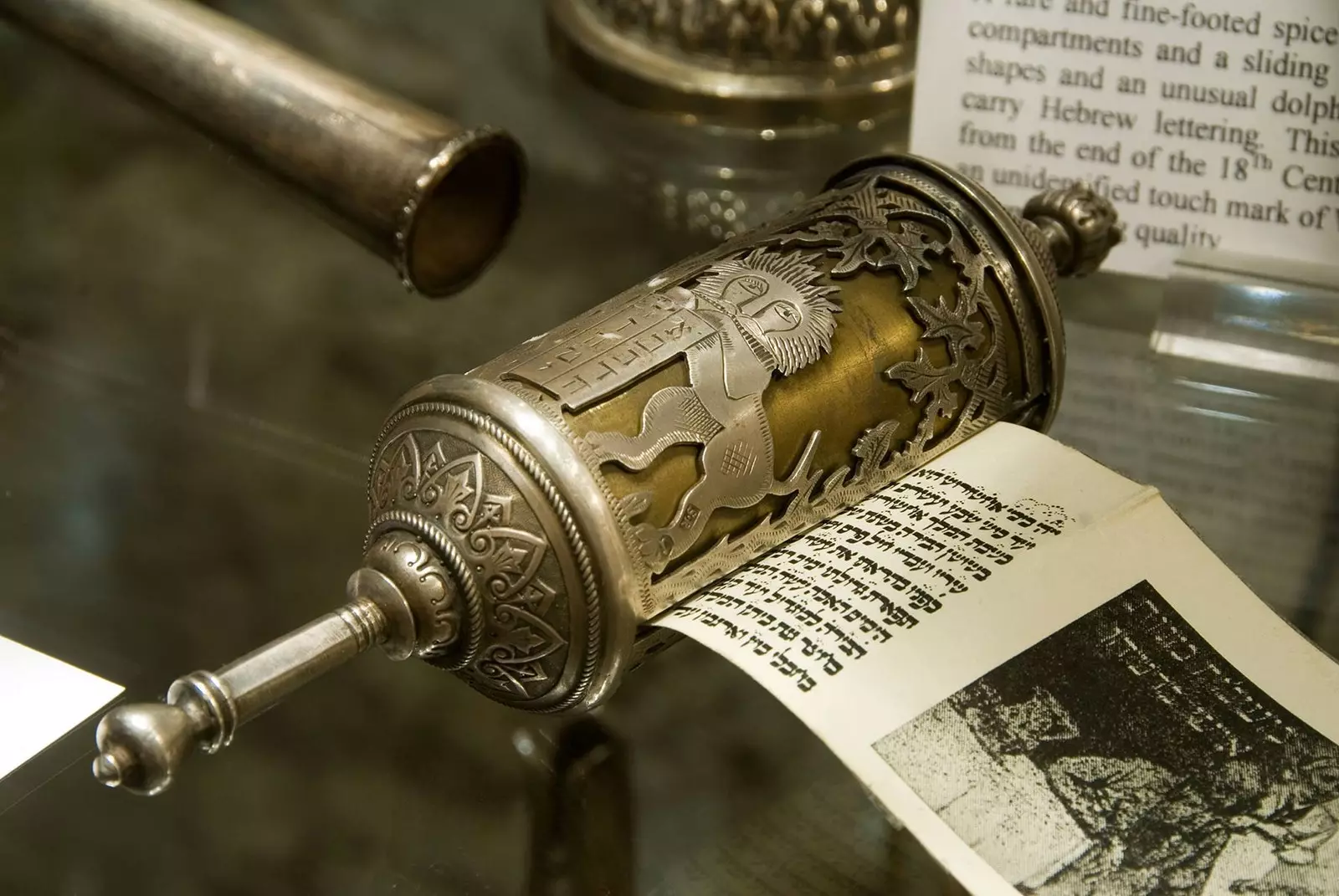
Relic preserved in the Greater Synagogue
At number 6 of this same street, we ran into the oldest house in the city , as it has been inhabited since the 12th century. Despite having been restored, original ornamental elements from the Middle Ages are preserved. A curious fact about this building is that, if you pay attention, a certain inclination of the facade is observed , as a result of the earthquake that the city suffered in 1428.
Although, without a doubt, The most interesting place to delve into the culture of the Jews of medieval Barcelona is the Call Interpretation Center , located inside the so-called Casa de l'Alquimista, in the Placeta de Manuel Ribé. The building dates back to the 14th century and Jucef Bonhiac, an artisan weaver of veils, lived in it. The museum offers information about the neighborhood and daily life and, in addition, it exhibits the remains of the house, a permanent exhibition of ceramics found in archaeological excavations and tombstones from the 2nd century from the Hebrew cemetery of Montjuïc.
It may seem that this Jewish Barcelona is a place belonging to the past, but it is worth rescuing, preserving and remembering it in memory of the material and immaterial splendor that reached Barcelona during that time and for the incalculable legacy that they left us forever in this land, despite being expelled from their beloved Sepharad.
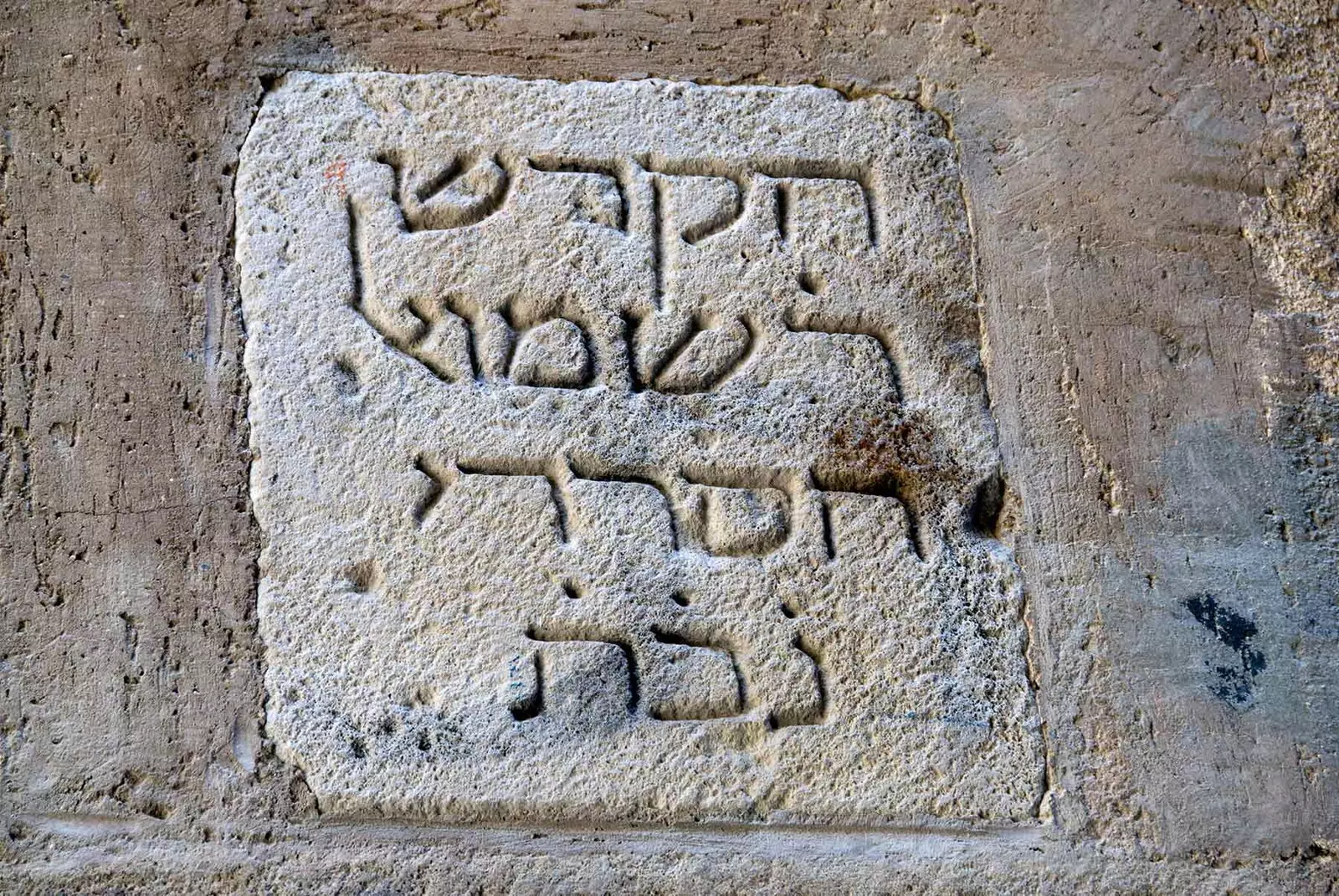
Reproduction of a tombstone in Marlet street
